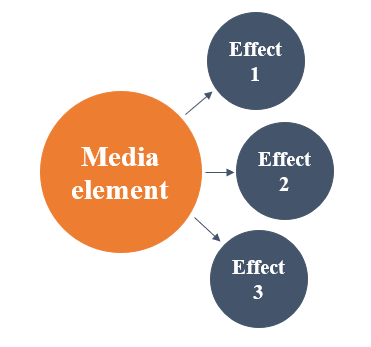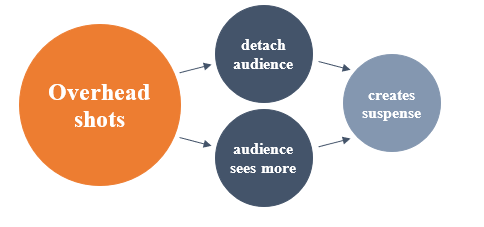As part of the Respond and Interpret strand of the Media Arts curriculum students must analyse and evaluate media artworks. While this can be in both written and oral language, the structure of an interpretation response involves an interpretation of the key message or them to provide a discussion of context, interpretation and judgement.
When analysing media artworks, students are often interested in the effect artistic choices have on the creation of meaning. As such, interpretation responses in Media Arts often allows students to include judgements of their interpretation of an artwork. For example, students may wish to explain the impact colour-choice has on the intended emotional response of a viewer.
Explicitly teaching students the structure of argumentation, and
having students annotate model interpretations, should help them to develop their understanding of how to construct texts that analyse media artworks.
Writing evaluative sentences
The required information in an evaluation of a media artwork can be illustrated by a simple diagram, such as the one below. This diagram allows students to list the intended effects of various media elements. Students can extend the diagram to show the effects of effects or to group effects by theme.

Once students have identified the media element and its intended effects, students should then use verbs in the present tense to describe the intended impact the media element has on the creation of meaning. The table below lists a small selection of verbs students can draw on to generate sentences that describe the intended effects of media elements. Definitions have been taken from the Macquarie Dictionary.

For example, when analysing Hitchcock's
Psycho (1960) (VCAMAR045), a Year 10 student may identify 'overhead shots' as an important media element. The immediate effects of this shot type are to detach the audience and to allow them to see more, which then helps to create suspense.

A student may then write:
The overhead shots detach the audience while also letting them see more of the action. This amplifies suspension in the film.
As students become more familiar with analysis, they may experiment with sentence structure during the revision and editing process. For example, the above sentence may be rewritten to become:
The overhead shots amplify suspension in the film as it both detaches the audience from the action while at the same time allowing them to see more.
Jointly constructing interpretation paragraphs
Once students can analyse individual elements of a media artwork, they should then be taught how to group these separate analyses into a sustained response. One way for teachers to do this is through the joint construction of a paragraph evaluating an element or elements.
To do this
- The teacher presents a media artwork to the class. For example, the teacher might show
'Pupils', the 2017 winner of Tropfest Junior.
- The teacher leads a discussion to draw out the various media elements used in the artwork and their intended effects, writing the students' ideas on the board. Media elements students might note include:
- music: inspirational tone relating to a theme about victim and hero
- use of close-ups: to focus the audience on the protagonist
- use of slow-motion: to exaggerate the action
- use of blindfolds: to indicate characters choice to see/act against violence
- The teacher leads a class discussion to identify possible ways to group the students' ideas. For example, by
- technical and symbolic elements
- by story principles
- by the intended effect.
- Using one of the groupings proposed by students, the teacher models how to write an interpretation paragraph on the whiteboard. The teacher may ask students to contribute their ideas.
- In pairs, students choose another grouping and write their own paragraph, using the teacher as a model.
In the below example, the teacher jointly constructed the model paragraph analysing and interpreting
'Pupils'. The students proposed that the story principle media elements be grouped by technical and symbolic elements, and the teacher jointly constructed a paragraph about the use of blindfolds in the film.
'Pupils,' the winner of the 2017 Tropfest Junior competition, challenges the viewer to reflect on how we respond to bullying. The director uses black blindfolds to symbolise characters' choice to look away from, or 'not see,' incidences of bullying. However, because blindfolds can be removed, the director suggests that we have a choice to act when we see violence. When witnesses of bullying choose not to act, they become complicit and condone violence. This is demonstrated in the final shots of the film, when the boy witnesses a bullying episode and looks and walks away, only to have a blindfold put on him.
Curriculum links for the above example:
VCAMAR038,
VCAMAR039,
VCAMAR045,
VCAMAR046.